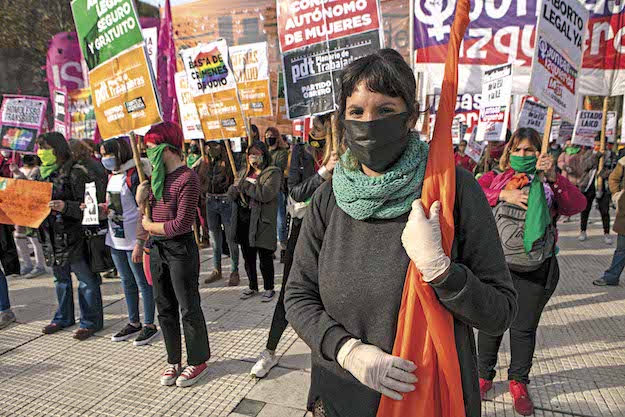This article is adapted from AQ’s special report on closing the gender gap.
An active women’s rights movement has formed in Latin America to fight some of the world’s highest rates of gender violence. Thanks in large part to their efforts, many countries have adopted comprehensive legislation meant to prevent, investigate and sanction such crimes.
Unfortunately, having good laws is not enough. Effective enforcement is just as important, and this is an area where Latin America continues to fall short.
The status quo is clearly unacceptable. Women in Latin America experience daily physical, psychological and sexual violence, and in 2020 the problem has only gotten worse. The International Rescue Committee has recorded an alarming increase in reports of gender-based violence since the beginning of the COVID-19 pandemic in Colombia, El Salvador, Honduras, Mexico, Venezuela and other countries.
Meanwhile, Latin America has also seen a wave of recent campaigns and protests where women of all ages, races and social classes are denouncing the prevalence of the problem of femicide and other forms of gender-based violence, demanding a better state response and more accountability for perpetrators for these crimes.
More can be done.
Benchmark Legislation
Up until today, there have been three noteworthy waves of legislation in Latin America. The most significant occurred during the 1990s and involved legislation to combat domestic and intra-family violence. These first-generation laws are still relied upon by at least 24 Latin American and Caribbean countries. After 2000, a more comprehensive set of second-generation laws expanded the protection for women against all forms of violence. These were followed by the promulgation by about 18 Latin American states of laws to criminally sanction femicide, feminicide and gender-based motivated killings.
One of the most emblematic laws in the region was created when a domestic violence survivor, Maria da Penha Maia, litigated her own case after suffering an excruciating pattern of physical and psychological abuse by her partner. The case languished before judicial authorities in Brazil for 17 years without resolution until it was brought to the Inter-American Commission on Human Rights. The comprehensive Maria da Penha law passed in 2006, but its origin exemplifies what many domestic violence victims in Latin America go through, including the impunity of their cases before the institutions of justice.
This law in Brazil and many others across the region have been lauded as important steps forward, but femicides and acts of violence against women continue to occur in Latin America and are not close to slowing down.
What is Missing?
A close look at the experience of implementing these laws to date in Latin America reveals pieces that are urgently needed.
Some have been highlighted by the body at the Organization of American States entrusted with the follow-up to the Inter-American Convention on the Prevention, Punishment and Eradication of Violence against Women (Convention of Belém do Pará). Obstacles include the social tolerance of these crimes; low state investment in policies, programs and services to address gender-based violence; the weakness of the administration of judicial institutions and their limited presence across the national territory; the need for more coherent data collection efforts; and the lack of uniformity in the terminology used in legislative text.
One of the most crucial pieces is stronger mechanisms for reporting crimes. Especially in the era of COVID-19 lockdowns and confinement, services to report violence should be considered “essential,” including shelters and family courts. The Colombian and Chilean governments have allowed victims to report crimes via WhatsApp and Argentina recently allowed victims to report domestic violence in pharmacies.
However, all this is in vain if women do not have clear and thorough information on how and where to report crimes, as well as where to seek shelter and legal services. Government campaigns to disseminate information in both rural and urban areas are paramount, especially in the online realm through social media. Peru, along with the United Nations Development Program, for example, spearheaded a campaign with the collaboration of more than 300 institutions to raise awareness about gender violence by promoting the use of purple masks.
Collecting data to inform legislative and public policy making is another pressing priority. Statistics on gender violence rates and complaints can help policymakers assess the scope of violence against women, and design effective strategies that match its prevalence.
Additionally, addressing social stereotypes of women and the tolerance of gender-based violence are important preconditions to seeing any reduction in violence. Latin America is still affected by the sexism, discrimination and patriarchalism that fuels gender-based violence. Our understanding of women’s experiences should reflect the intersectional range of risks women face due to their race, ethnic background, economic position and age.
__
Celorio is the associate dean and a lecturer for International and Comparative Legal Studies at The George Washington University Law School








